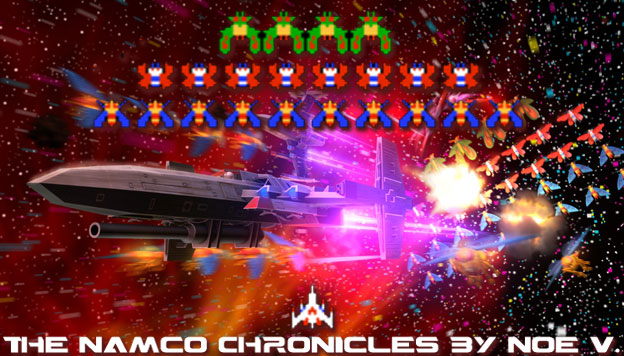
At the start of this series I mentioned that Pole Position was one of the biggest hits from Namco. It was one of the best selling games of the '80s and had been ported to just about very console, handheld and computer system ever created. Very few games could claim to have reached as many as many people through the years and even less racing games could match the success of Pole Position. It did very well financially but more importantly it helped the image of the company. When it came to racing games few studios could say their legacy was as important. When it came to puzzle games none could claim the longevity of Pac Man. When it came to space shooters none could match Galaga. Namco had built a reputation based on fantastic experiences and managed to keep those memories growing over 30+ years. The racing genre was the one that they had their biggest successes and failures with.
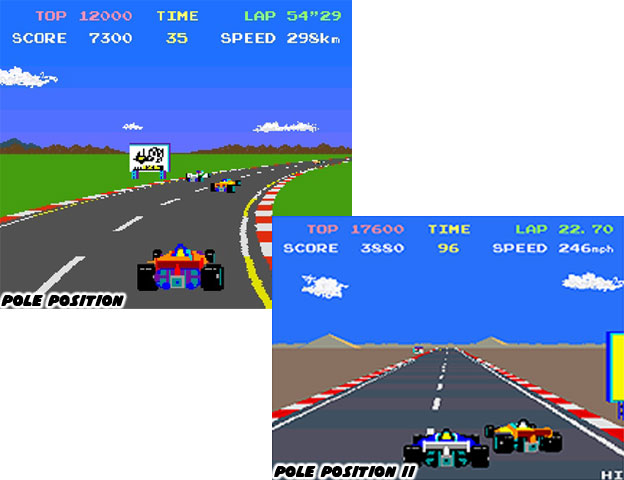
Pole Position put Namco on the racing map but other publishers were challenging them at every turn. The sequel to Pole Position did well but so were rival titles from Atari and Sega. The company lost momentum when they tried to re-imagine the open wheel racer with the Final Lap series. Even the introduction of 3D graphics in the Winning Run series did little to get Namco back on top. Ridge Racer was the first serious attempt at recapturing an entire genre. Of course Sega countered by stealing the talent that produced Ridge Racer. The remaining members of the company tried to make a better racing experience than Ridge Racer but they missed the mark from a gameplay and critical perspective.
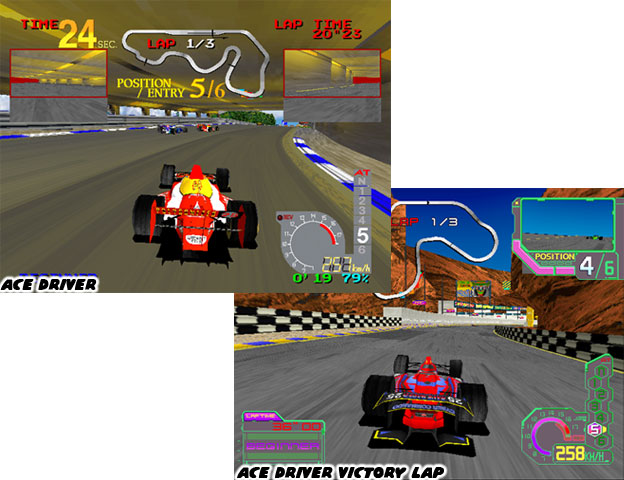
Namco returned to the open-wheeled racer in 1993. The Indy and Formula-1 inspired cars in Ace Driver: Racing Evolution were supposed to be leagues ahead of the best cars in Ridge Racer. In fact they were supposed to be ahead of Formula-1 cars, they were called Progressed Formula Racers in the game flyers. They couldn't call them Formula-Zero because that was already taken by Nintendo. Namco wanted to let audiences know that the rides in Ridge Racer were nice but the fastest race cars on the planet still resembled the machines from Pole Position. These cars were the pinnacle of race engineering and unlike the cars in Ridge Racer they were not street legal. Unless you were a professional driver the cars in the Ace Driver series were unattainable. Of course it was a sense of attainability that made Ridge Racer popular to begin with. The cars were tuned for peak performance on real roads and not sterile race tracks. The Ace Driver cars may have been faster but they were limited by their focus. Namco went back to the drawing board and tried to salvage what they had started. If the remaining staff had failed to live up to the standard set by the original Ridge Racer then at the very least they could begin a new franchise that was a spiritual successor to Pole Position.
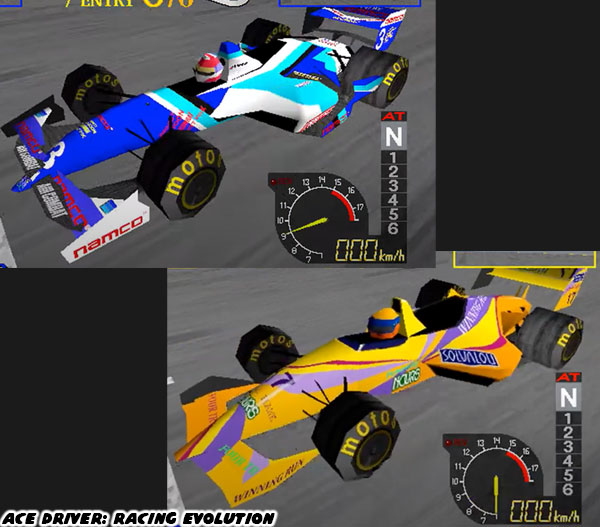
The majority of the remaining team members had worked in other genres and were busy on various arcade and console titles as well. They wanted to do something with the racing franchise that was much more forward thinking. Rather than trying to recreate the world of contemporary open-wheel race cars they decided to push the technology a few years if not decades down the line. The studio looked at the other games they had published with a similar futuristic element like the UGSF hit like Cyber Sled and tied those games in through advertising and sponsorships. Ads for Cyber Commando, Rave Racer and newer hits were plastered all over Ace Driver: Victory Lap, the 1994 sequel to Racing Evolution.

At first glance the cars looked like traditional Formula-1 autos. They were bright and colorful, wrapped in the livery of a specific team and covered with bold stickers. When players drove the cars and raced through the environments they began to see visual cues that made the world seem far more futuristic than other games. Enormous glass and steel stadiums were constructed around the tracks, many with three-dimensional holograms playing advertisements high above the race course. Some of the tracks were set in the countryside but even those had grandstands and box seats that looked like they were designed by science fiction architects. The tracks in the city were surrounded by enormous skyscrapers, hotels and office buildings that looked far more fantastic than most modern metropolises.
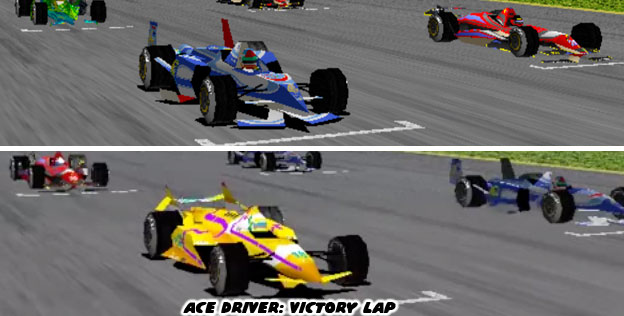
The cars in the Ace Driver sequel were amazing pieces of art. There were only four basic models featured in the series, compared to the dozens in any Ridge Racer title. Each of those four however had its own strengths and weaknesses. Most arcade racing fans could name off these things, the fastest car in the game was also the most difficult to control. The easiest to control had the slowest top speed and the cars in the middle either handled well or accelerated well. Audiences also got to choose whether or not their car would be a manual or automatic transmission. The four basic cars, and their color schemes were formally given names in Victory Lap. There were Team Red Lightning, Scuderia Blue Castle, Yellow Cyclone Racing, and Green Island Motorsport.
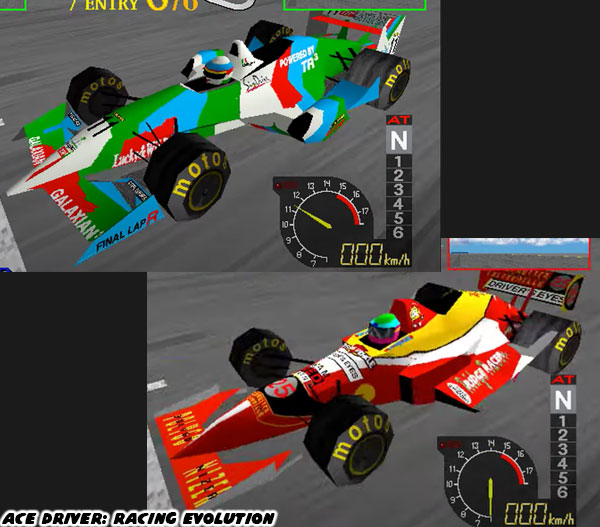
In order to post the fastest times players had to go with manual transmission and hope that they could learn the best speed and angles for every turn or risk a miserable wipeout. The game was unforgiving and had a steep learning curve. Of all the racing games I ever played this was one title that was in the middle of the pack. There were some very strong elements that worked in its favor. The car designs were awesome, the track layouts memorable and the music selection was great. It had trace elements of great Ridge Racer and UGSF soundtracks, possibly because the same people that worked on those games also worked on both Ace Driver soundtracks. Despite the good elements it still lacked solid gameplay. It made the decision to stick with the Ridge Racer series much easier for Namco.
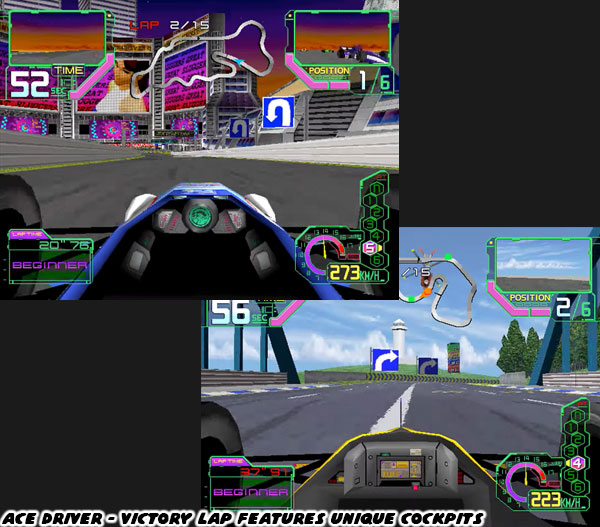
Namco was looking for new sources of revenue and adapting to the changing market at the start of the new millennium. The relationship that the studio had with Sony was still very solid but they also had to flexible and now include mobile-friendly titles into their portfolio. The company had to look at developing games for markets that were rapidly expanding. More than a decade after the last Ace Driver was released a new arcade-only title turned up. Published in 2008 the game was released in China, Taiwan and Hong Kong only.
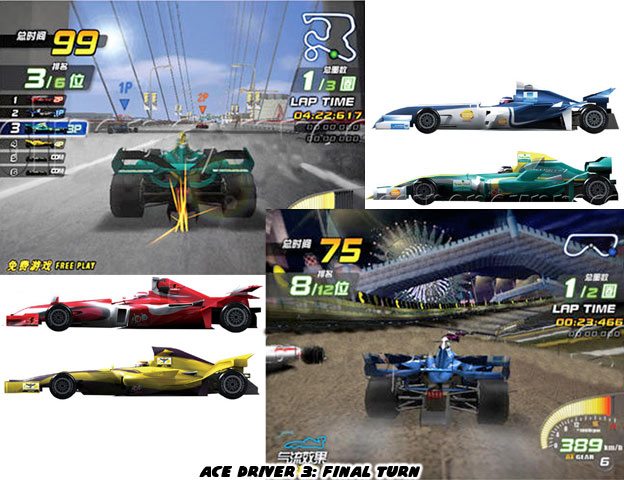
The Chinese middle class had exploded in prosperity in a few generations. They were looking to buy into, and invest into every possible source of entertainment. The ban on video games, specifically arcade games had been lifted in the mainland and the population was starved for new titles. Ace Driver 3: Final Turn was built on an advanced version of the Ridge Racer 7 engine. Graphically speaking it looked slightly better than the last console release of Ridge Racer. Perhaps this new engine was the prototype build for Ridge Racer 8, or even for Ridge Racer Vita. Whatever the case was this new version of Ace Driver had controls that were much more intuitive for fans of the Ridge Racer series and even beginning drivers. This meant that drifting in an open-wheeled car was now an option rather than a mistake.
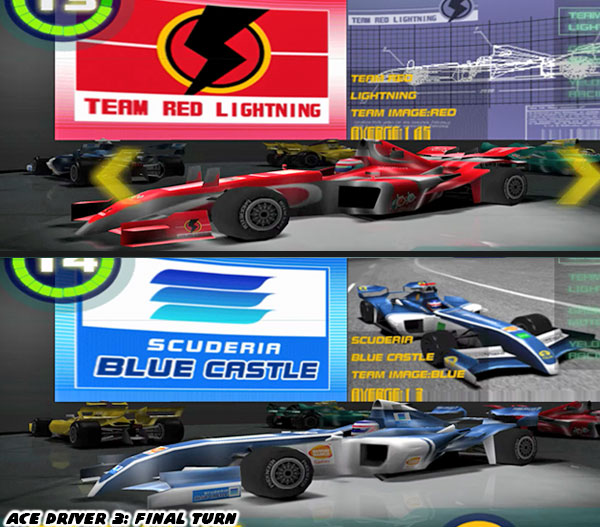
Ace Driver 3 maintained the tradition of the four car types from the previous games. Each one held onto the same futuristic designs and were presented with much greater fidelity than any other car in the series, Ridge Racer included. The game did take another element from Ridge Racer as well. The track layouts became more fantastic in nature. They looked less like a Formula-1 courses surrounded by brilliant architecture and instead incorporated storytelling elements, including racing through a futuristic metropolis and even through an amusement park. These details would have made Sega green with envy. One of the new tracks actually had roots in Rave City from the Ridge Racer series.
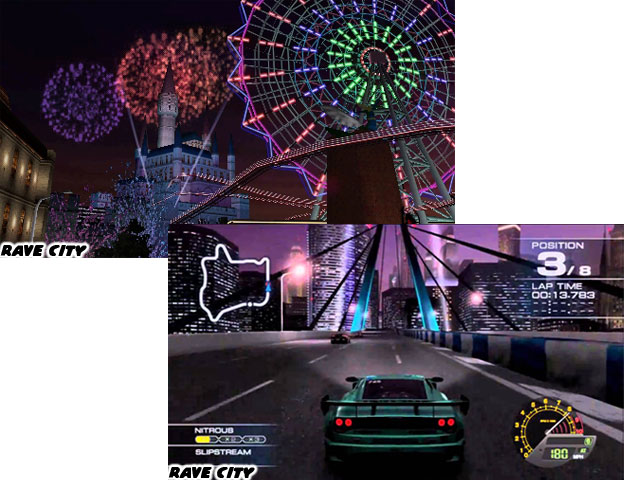
Audiences had been racing by the amusement park in Rave City for some time, they had seen it from a distance and got a bird's-eye view of the park when the occasional new machine was delivered. Now thanks to the Ace Driver series players could get up close and personal to the track. They could see that the designers at Namco never stopped working on the courses between releases. If you stuck with the series long enough then eventually you too would get a chance to drive through the roads seen in the distance. The only question now was what type of cars would Namco allow audiences to pilot in the future? The next blog in this series will take a guess at that and also be the final entry in the series. I hope to see you back for that.
As always if you would like to sponsor me
please visit my Patreon page and consider donating each month, even as little as $1 would help make better blogs and even podcasts!






















No comments:
Post a Comment